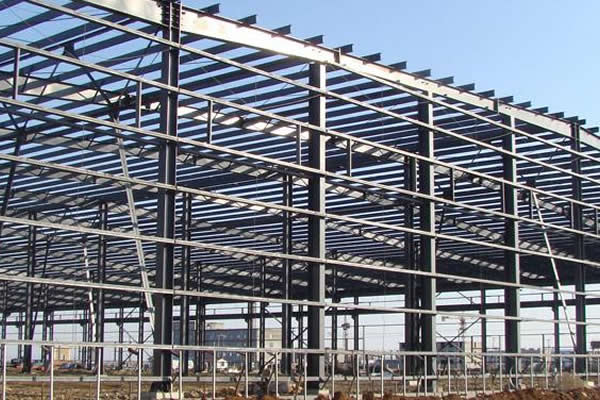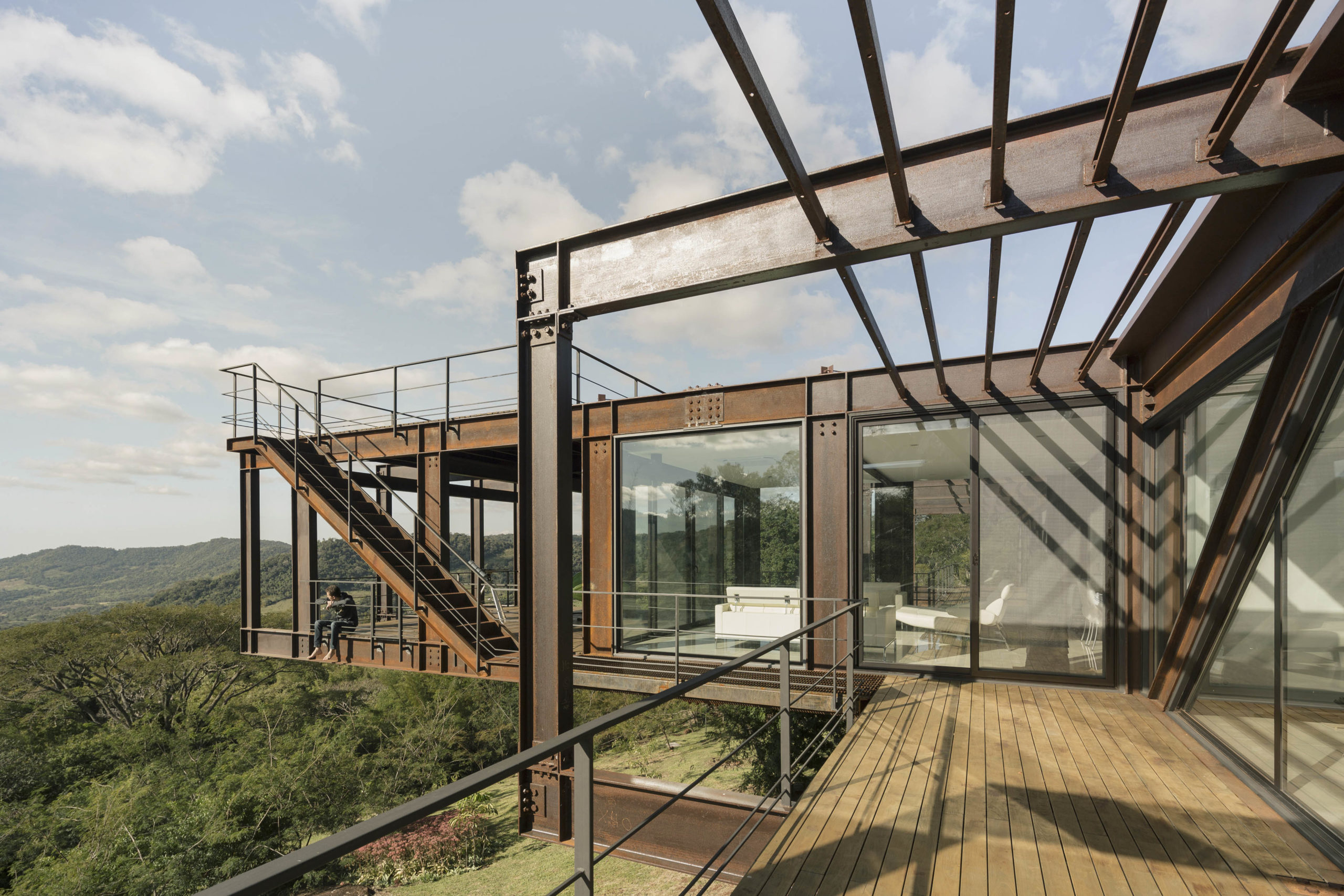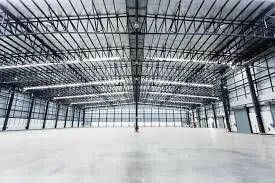Prefabricated Steel Structure Advantages: Construction Revolution
Discover 6 key benefits of prefabricated steel structure transforming the construction industry. Efficiency, safety, and sustainability in one innovative solution.
Prefabricated steel structure has brought significant changes to the modern construction industry. By combining factory precision and on-site efficiency, this method offers unparalleled advantages. From improved construction safety to design flexibility, steel structure prefabrication opens new opportunities for construction professionals.
This article will explore six main benefits of steel structure prefabricated that not only optimise the building process but also provide long-term added value to your project. Let’s explore how this innovation is transforming the way we build for a better future.
1. Prefabricated Steel Structure improves construction safety
Safety is the top priority in every construction project, and steel structure prefabrication brings significant improvements in this aspect. The prefabrication process carried out in a controlled factory environment allows for stricter and more consistent safety standards. Workers can work in safer conditions, with good lighting, controlled temperatures, and adequate safety equipment.
At the construction site, the use of prefabricated components reduces the time workers need to spend at heights or in other dangerous areas. Faster and more efficient installation processes mean reduced risk of workplace accidents. Additionally, precisely designed prefabricated components reduce the need for on-site adjustments, which are often a source of potential hazards.
Prefabrication also allows for the use of advanced technologies such as robots and automated machines in the production process, further reducing the risk of worker injuries. By reducing the amount of manual work required, prefabricated steel structure significantly lowers accident and injury rates in the construction industry.

2.Prefabricated Steel Structureis a lightweight material
One of the main advantages of prefabricated steel structure is its lightweight yet strong nature. Compared to traditional construction materials like concrete, prefabricated steel offers a very advantageous strength-to-weight ratio. This brings a number of significant benefits to the construction process.
First, the lighter weight facilitates the transportation of components from the factory to the project site. This means reduced shipping costs and lower environmental impact from vehicle emissions. At the construction site, lighter structures allow for the use of smaller and more economical lifting equipment.
Second, lighter loads on the foundation mean simpler and more economical foundation requirements. This is especially beneficial in areas with less than ideal soil conditions. Additionally, lighter structures also provide better seismic performance, making them an ideal choice for earthquake-prone areas.
Third, the lightweight nature of prefabricated steel structures allows for the construction of taller buildings and wider spans without compromising structural integrity. This opens up opportunities for more innovative and flexible designs, allowing architects and engineers to realize their visions more freely.

3. Prefabricated Steel Structure is a durable product
Durability is one of the main advantages of prefab steel structure that makes it an ideal choice for long-term construction projects. Prefabricated steel is known for its exceptional strength and resistance to various environmental conditions and loads.
First, steel has high resistance to corrosion, especially with modern coating and galvanising technologies. This means steel structures can last for decades without significant degradation, even in aggressive environments such as coastal areas or industrial zones.
Second, prefabricated steel has excellent fire resistance. With proper treatment, steel structures can maintain their integrity during fires, providing more time for evacuation and firefighting. This is a crucial safety factor in high-rise buildings and public facilities.
Third, prefabricated steel structures have outstanding resistance to dynamic loads such as wind and earthquakes. Their elastic properties allow the structure to absorb and distribute energy more efficiently, reducing the risk of structural damage in extreme events.
Fourth, prefabrication allows for stricter quality control during the production process, ensuring each component meets high durability standards. This reduces the risk of hidden defects that could reduce the structure’s lifespan.

4. Prefabricated Steel Structure is cost-effective
Cost efficiency is one of the main advantages of prefabricated steel structure that makes it an attractive choice for many construction projects. Although the initial cost of steel materials may be higher compared to some alternatives, long-term savings and overall process efficiency make steel structure prefabrication a very cost-effective solution.
First, prefabrication significantly reduces on-site construction time. Factory-produced components can be quickly installed on-site, reducing labour costs and accelerating project completion. This means buildings can start being used or generating revenue faster, increasing return on investment.
Second, strict quality control in the prefabrication process reduces the likelihood of errors and repairs on-site, which are often sources of significant cost overruns. Reduction in material waste also contributes to cost efficiency.
Third, prefabricated steel structures require minimal maintenance throughout their lifespan. Resistance to corrosion, fire, and dynamic loads means reduced long-term maintenance and repair costs.
Fourth, the flexibility of steel structures allows for future adaptations and changes at lower costs compared to traditional structures. This is particularly valuable in the context of commercial or industrial buildings that may need to be modified over time.
Fifth, better energy efficiency of buildings based on prefabricated steel structures can result in significant savings in long-term operational costs.

5. Prefabricated Steel Structure gives you flexibility
Flexibility is one of the greatest advantages of prefab steel structure that makes it highly favoured by architects, engineers, and project owners. This flexibility covers various aspects, from design to construction and long-term use.
First, in terms of design, prefabricated steel structures allow for the creation of more diverse and innovative forms and spaces. The high strength of steel allows for longer spans and more open spaces, providing design freedom that is difficult to achieve with other materials. This is particularly valuable in projects such as stadiums, airports, or modern office buildings.
Second, prefabrication allows for design modifications up to a relatively advanced stage in the construction process. Changes can be made more easily compared to traditional construction methods, providing valuable flexibility in accommodating changing client needs or unexpected challenges.
Third, prefabricated steel structures are highly adaptive to changes in building use in the future. Buildings can be easily expanded, modified, or even dismantled and relocated if necessary. This is particularly valuable in the context of dynamic urban development or rapidly changing business needs.
Fourth, flexibility in installation allows for construction in difficult or limited locations, such as dense city centres or remote locations. Prefabricated components can be delivered and installed with minimal disruption to the surrounding environment.
Fifth, prefabricated steel structures allow for easier integration with other building systems, such as MEP (Mechanical, Electrical, Plumbing), facades, and interior finishes. This increases overall construction efficiency and provides flexibility in interior design.

6. Prefabricated Steel Structure is environmentally sustainable
Environmental sustainability has become a major focus in the construction industry, and prefabricated steel structure offers several significant advantages in this aspect. With increasing awareness of the environmental impact of construction activities, the use of prefabricated steel structures is becoming an increasingly attractive choice for projects that prioritise sustainable principles.
First, steel is a highly recyclable material. Almost 100% of steel structures can be recycled at the end of their lifespan, and new steel often contains a high percentage of recycled materials. This significantly reduces the need for new raw materials and the energy required for production, lowering the overall carbon footprint of construction projects.
Second, the prefabrication process in factories allows for better control over material use, resulting in significant waste reduction compared to traditional on-site construction methods. Waste generated in factories is also easier to recycle or manage properly.
Third, reduced on-site construction time means reduced disruption to the surrounding environment, including reduced noise, dust, and construction vehicle traffic. This is particularly valuable in dense urban areas.
Fourth, prefabricated steel structures often have better thermal performance, especially when combined with modern insulation systems. This can result in significant reductions in energy consumption for heating and cooling throughout the building’s lifespan.
Fifth, the flexibility and adaptability of prefabricated steel structures mean that buildings can be modified or expanded rather than demolished and rebuilt, reducing the need for new construction and additional resource use.
Sixth, the lighter weight of prefabricated steel structures means reduced need for large foundations and intensive use of concrete, which is a significant source of CO2 emissions in the construction industry.

Post Comment